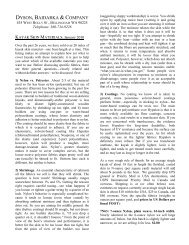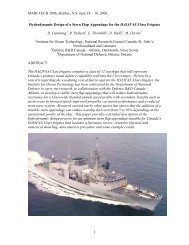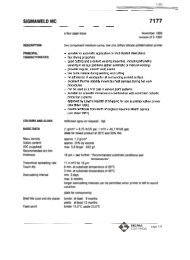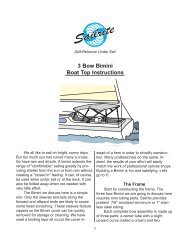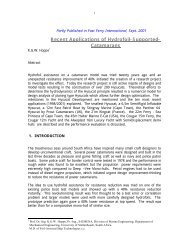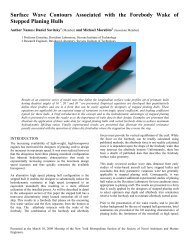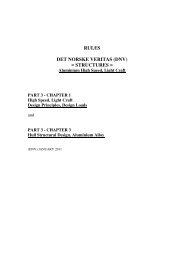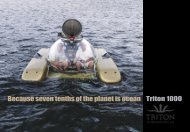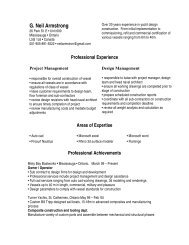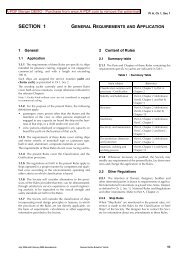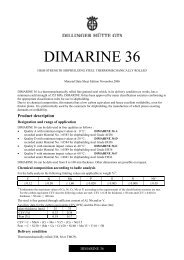CD03 - Issue #74: Designer / Builder Paul Bieker--Process Control ...
CD03 - Issue #74: Designer / Builder Paul Bieker--Process Control ...
CD03 - Issue #74: Designer / Builder Paul Bieker--Process Control ...
Create successful ePaper yourself
Turn your PDF publications into a flip-book with our unique Google optimized e-Paper software.
An isometric view of alifting hydrofoil on therudder of a B-3. Notethe structural pod<strong>Bieker</strong> devised tosupport this appendagein an open transom.of added wetted-surface drag in lightairs, and in heavy airs 14s plane anyway,also offering no real advantage.But in most wind conditions thatrequire at least one crew out on thetrapeze, the foil promised a boost.Using a friend's molds for a simple,symmetrical NACA0012 section. <strong>Bieker</strong>built a simple prototype foil the widthof the transom—except without thecontrols (soon to be fitted) that allowthe helmsman to adjust the angle ofattack. The maiden voyage, in the middleof winter, was cold and windy. "Weknew something was going to happen,but weren't sure what," he recalls. Theboat seemed fast but the foil was powerfulenough to pitchpole the 14 whilesailing to weather, and getting back tothe dock was an adventure. "The nexttime, though, we sailed against anotherboat and we just powered through itlike corn through a duck. Downwind inlight-to-moderate airs, you can put someload on it and get back in the boat, andeven if you don't go any faster you cansail deeper." He laughs, rememberingthe giddiness of that clay on the sound:"I realized right there on the water withour boat just pasting the other. 'If thewind is anything like this, we're goingto win the Worlds!'" Two months later,with the unrefined foil shortened toabout two-thirds the transom's width,the boat did win. <strong>Bieker</strong>'s now gearingup to produce a more sophisticated systemusing an asymmetrical foil.By the early 1990s, bowsprits andimmense asymmetrical chutes set fromspinnaker launchers appeared on theracing circuit. <strong>Bieker</strong> comments."Sometimes flexing serves a purpose, asin the tip of a mast or in a boom thatspills air from the sail in a puff. Butwhen a bowsprit bends upward, thechute luff gets rounder, the draft goesaft, and the angle of attack on the chutegets tighter, so it's all going in the wrongdirection." <strong>Bieker</strong> employed largerdiameter,tapered tubes. (To keep the largeapertures from scooping water when thesprits are retracted, he notes, "some guysput toilet plungers over the hole.")Carbon spars also appeared. When abendy mast bows in a puff, the houndsdescend slightly, loosening the headstayand making the jib fuller. "It's anothersituation where things are going in thewrong direction," says <strong>Bieker</strong>. "Aboutfour years ago, one innovator inAustralia tried a flexible-tip rig, with thelower section locked up by lower diagonalshrouds, which gave him consistentforestay tension. He won theWorlds in it. but the middle of the rigwas static. You could make it fast inlight air or in heavy airs, but not inboth." For the inconsistent conditionsaround Seattle, <strong>Bieker</strong> didn't want a rigso "locked up." He tried a pre-bent stickfeaturing a very stiff lower section, longtaper, and swept-back cap shrouds thatran through ears projecting forwardfrom the lower spreaders. Tighteningthe cap shrouds also pulled back on themiddle of the mast. The midsectioncould bow forward slightly to flatten theDECEMBER/JANUARY 2002 73



